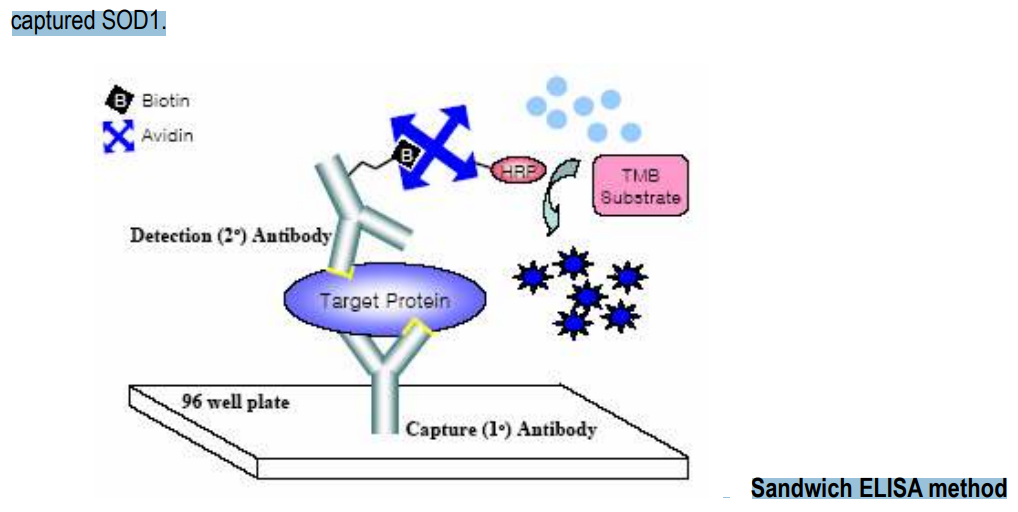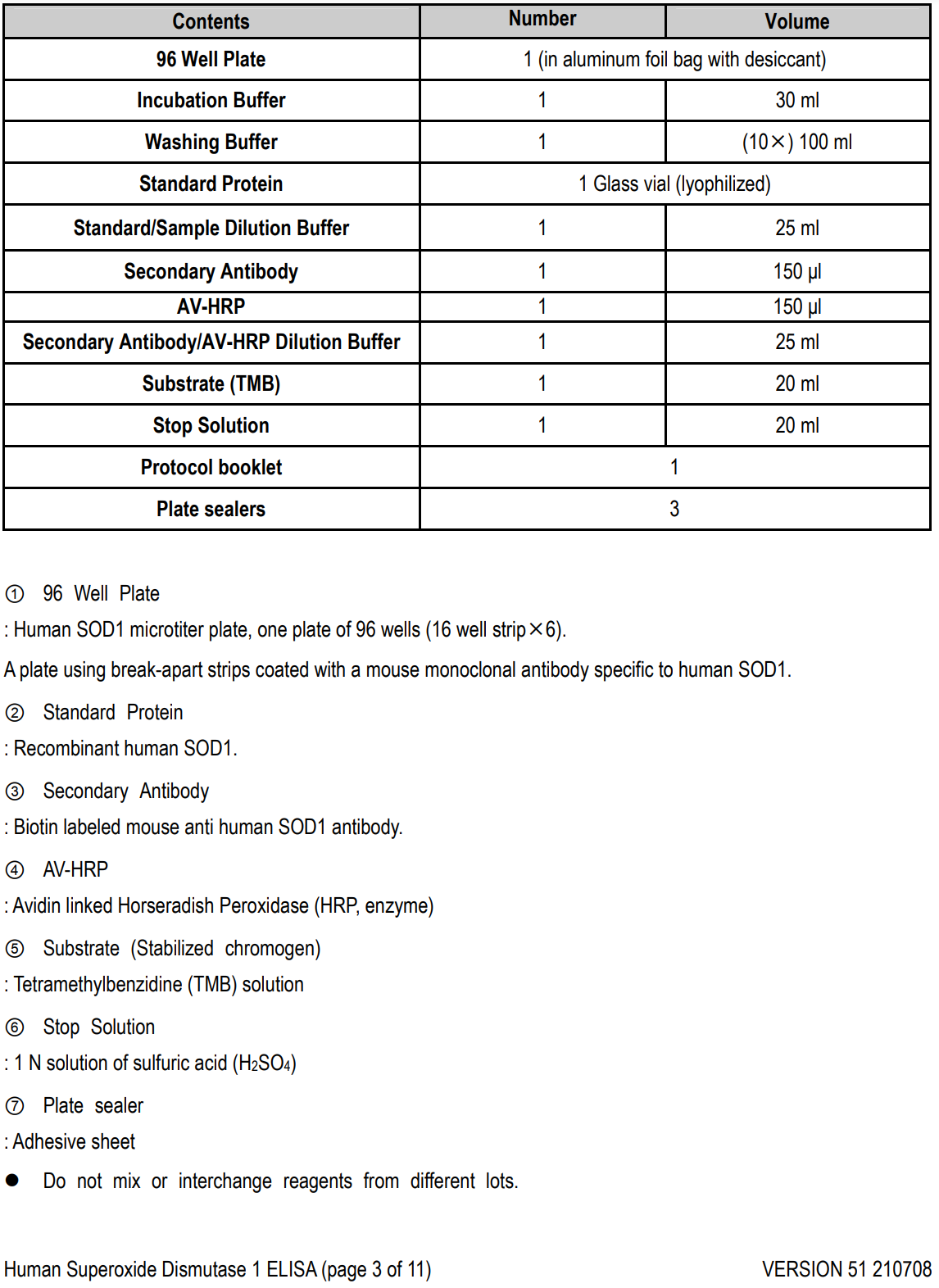Human Superoxide Dismutase 1 ELISA
Cat. No.: RLF-EK0101R
1. Introduction
Superoxide dismutase (SOD) is an antioxidant enzyme involved in the defense system against reactive oxygen
species (ROS). SOD catalyzes the dismutation reaction of superoxide radical anion (O2
-
) to hydrogen peroxide,
which is then catalyzed to innocuous O2 and H2O by glutathione peroxidase and catalase. Three unique and highly
compartmentalized mammalian superoxide dismutases have been biochemically and molecularly characterized to
date. SOD1, or CuZn-SOD (EC 1.15.1.1), was the first enzyme to be characterized and is a copper and
zinc-containing homodimer that is found almost exclusively in intracellular cytoplasmic spaces. SOD2, or Mn-SOD
(EC 1.15.1.1), exists as a tetramer and is initially synthesized containing a leader peptide, which targets this
manganese-containing enzyme exclusively to the mitochondrial spaces. SOD3, or EC-SOD (EC 1.15.1.1), is the
most recently characterized SOD, exists as a copper and zinc-containing tetramer and is found in extracellular
space.

The level of SOD1 elevates in response to a wide array of mechanical, chemical and biological messengers such
as heat shock, shear stress, and UVB- and X-irradiation. Decreased levels of SOD1 expression can also be
triggered by activation of the AP2 transcription factor. A down-regulation of SOD1 has been shown in alveolar type II
epithelial cells and lung fibroblasts after exposure to hypoxia.
The genomic organization of SOD1 genes shows striking similarities between species and consists of five exons
and four introns. The TATA and CCAAT boxes, as well as several highly conserved GC-rich regions, have been
localized in the proximal promoter region. Also, more than 90 different mutations of the SOD1 gene have been
associated with amyotrophic lateral sclerosis (ALS), also known as Lou Gehrig’s disease.
2. Principles of Method
The design of this assay is based on a sandwich Enzyme-Linked Immunosorbent Assay (ELISA). The microtiter
plate provided in this kit has been pre-coated with a monoclonal antibody specific to human SOD1. Samples are
pippetted into these wells. Unbound SOD1 and other components of the sample is removed by washing, then
Human Superoxide Dismutase 1 ELISA (page 2 of 11) VERSION 51 210708
biotin-conjugated monoclonal antibody specific to SOD1 is added. In order to quantitatively determine the amount of
SOD2 present in the sample, Avidin conjugated to Horseradish Peroxidase (HRP) is added to each microplate well.
Next, a TMB-substrate solution is added to each well. Finally, a sulfuric acid solution is added and the resulting
yellow colored product is measured at 450nm. The absorbance (O.D. value) is directly proportional to the amount of
captured SOD1.
Sandwich ELISA method
3. Intended Use
The AbFrontier human Superoxide Dismutase-1 (human SOD1) ELISA kit is to be used for the in vitro quantitative
determination of human SOD1 in human serum, human plasma, cell lysate and buffered solution. The assay will
recognize both native and recombinant human SOD1.
This kit has been configured for research use only and is not to be used in diagnostic procedures.
4. Storage and Stability
All kit components of this kit are stable at 2 to 8°C. Any unused reconstituted standard should be discarded or
frozen at -70°C. Standard can be frozen and thawed one time only without loss of immunoreactivity.
5. Chemical Hazard
- Stop solution: This reagent is an irritant to eyes, skin and mucous membranes. Avoid contact with
eyes, skin and clothing. Wear suitable protective clothing, gloves and eye protection. In the event of
contact with eyes or skin, wash immediately with plenty of water.
Human Superoxide Dismutase 1 ELISA (page 3 of 11) VERSION 51 210708
- All reagents containing Sodium Azide also contain Thimerosal as a preservative. Thimerosal contains
Hg thus should be handled with great care.
6. Kit Contents
Content
